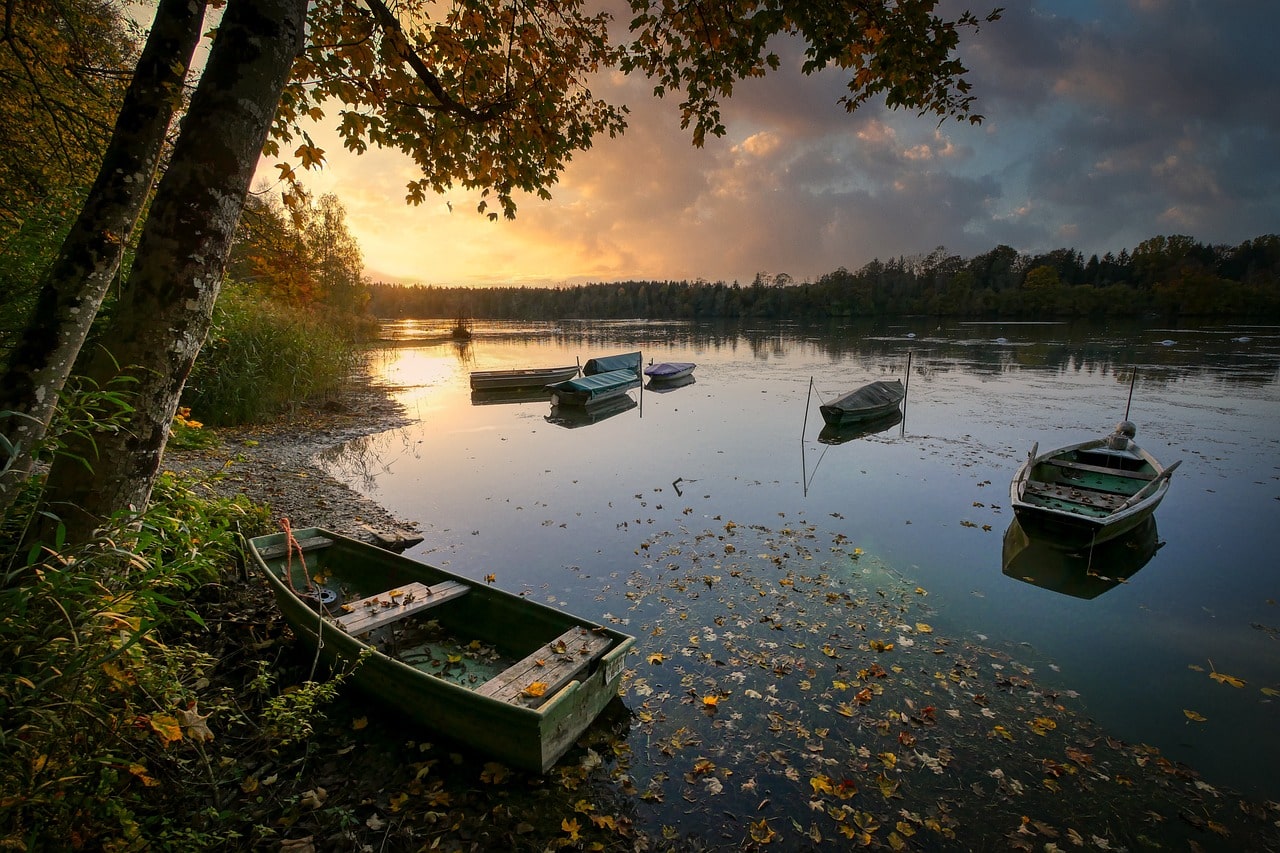Lake Minnewanka is known as the grand expanse in Banff National Park. Nestled amidst majestic mountain ranges, this vast 17-mile-long lake teems with diverse wildlife along its shores. Just a short three-mile tour from the Town of Banff, this stunning body of water offers a rustic retreat to countless adventurous tourists each summer. Settled on the eastern side of the Continental Divide, the waters of Lake Minnewanka cascade through the valley of the Cascade River, with limited access to most of its shoreline except by foot. At nearly 5,000 feet above sea level, the winters are harsh here, but the summers boast refreshing coolness; gentle breezes sweeping down the expansive lake keep annoying bugs at bay, making it an ideal spot for wilderness camping by canoe. Lake Minnewanka is the sole lake allowing motorized boats within Banff National Park. Renowned for its exceptional lake trout and Rocky Mountain whitefish, this lake gem is celebrated among Canada’s top ten lake trout fishing spots, attracting avid anglers who often seek the guidance of local fishing experts in Banff. Anglers in Banff National Park must possess either a daily or annual permit obtainable at any of the park’s information centers, campground kiosks, tackle shops and nearby sauna pools. Chemical baits, natural baits and lead tackle are strictly prohibited. Non-anglers can also savor the charm of the lake through the regularly scheduled cruise tours that grace its crystal waters throughout the summer months. On the southern shore stands a boat launch, enabling visitors to bring their vessels, while small aluminum boats equipped with motors can be rented from the tour operators. The slender and lengthy Lake Minnewanka is a paradise for sailing, though its off-the-beaten-path location results in fewer crowds than other more accessible areas. Canoes and kayaks are the favored modes of exploration and camping on this pristine lake. While caution must be exercised to guard against sudden gusts of wind creating waves, sticking close to the shoreline and investigating the numerous inlets, offer the prime means to spy on wildlife and relish the breathtaking vistas crafted by the mirror-like reflections of the nearby towering peaks on the serene waters. Mount Aylmer, soaring to 10,374 feet high, is the loftiest peak in this park region, located a few distances north of Lake Minnewanka. The wildlife in Banff National Park is nothing short of spectacular. The park is home to 56 recorded mammal species, including grizzly and black bears inhabiting the forested areas, occasionally necessitating the closure of the popular trail along the lake’s north side to avoid potential encounters. Cougars, lynxes, wolverines, weasels, northern river otters, wolves, elk, mule deer, and white-tailed deer are prevalent in and around Banff, while moose are known to be more reclusive, favoring wetland spots and streamside locales. Mountain goats, bighorn sheep, marmots, and pikas abound, with the bighorn sheep often spotted sharing space along the only road in the vicinity, the Lake Minnewanka Loop. Other notable mammals include beavers, porcupines, squirrels, and chipmunks. Among the predatory bird species commonly sighted are bald eagles, golden eagles, red-tailed hawks, ospreys, falcons, and merlins. At the same time, a multitude of smaller songbirds and shorebirds thrive along the wooded lakeshore. A scenic hiking and mountain biking path traces the lake’s northern edge, meandering past Stewart Canyon and six remote campsites (permit required). Guided horseback tours are also available in the area. While there are no designated campgrounds at Lake Minnewanka, Two Jacks Lake downstream from the lake offers two campgrounds for visitors., Originally a smaller natural lake, Lake Minnewanka was known as the ‘Water of the Spirits.’ The indigenous tribes residing along the lake spoke of a mythical half-human, half-monster lake dweller whom some early settlers claimed to have glimpsed. Streams fueled by glaciers that cascaded from Mount Inglismaldie, Mount Girouard, and Mount Peechee on its southern face fed the lake, which was tucked away in Stewart Canyon along the Cascade River. Once a popular resort area, Minnewanka Landing’s water levels were stabilized in 1895 by the construction of a modest wooden dam near the lake’s mouth. This dam was later rebuilt and expanded for hydroelectric purposes in 1912, submerging Minnewanka Landing. Subsequent enlargement of the dam considerably increased the reservoir’s size and depth, providing hydropower to Calgary and Banff. Now nestled under 60 feet of water, the remnants of the old village site and the 1912 dam are favorite haunts for scuba divers who relish exploring the relics of the past beneath the lake’s surface. The nearby town of Banff lies wholly within Banff National Park, with all lands falling under the park’s jurisdiction. Only those with a legitimate reason to reside in the town can do so. The town revolves around catering to park visitors, offering an array of accommodations such as hotels, inns, resorts, and spas, as well as a diverse selection of shops, recreational facilities, and historical sites. The Banff Centre, the Whyte Museum, the Buffalo Nations Luxton Museum, the Cave and Basin National Historic Site, and a number of art galleries are among the noteworthy attractions. The Lake Minnewanka hosts the annual Dragon Boat Festival each summer, which draws numerous spectators and participants. The town’s original hot springs continue to lure visitors. Real estate in Banff or along Lake Minnewanka is restricted to those seeking to operate licensed recreational establishments. Nevertheless, Banff is an excellent base for a week or two of exploration within Banff National Park. Situated along the Nearly always accessible by the Trans-Canadian Highway, Banff offers a variety of winter sports including skiing, ice skating, snowboarding, and ice fishing on the smaller nearby lakes. The awe-inspiring craggy peaks of the Canadian Rockies beckon exploration, promising a vacation at Lake Minnewanka you will never forget. We eagerly await your arrival! *Lakelubbers estimate the lake area conservatively. Other details, such as volume, average depth, and catchment area, are unavailable.

